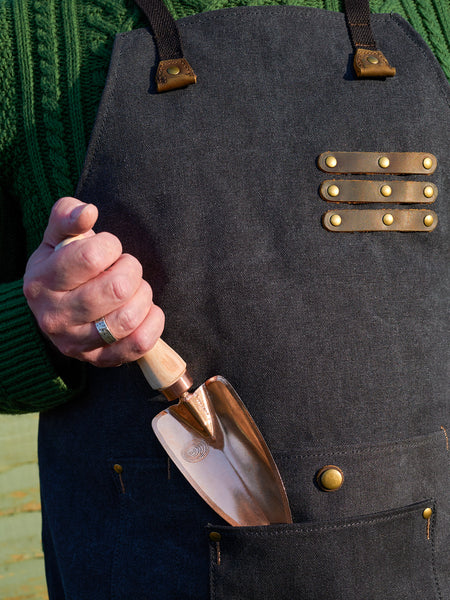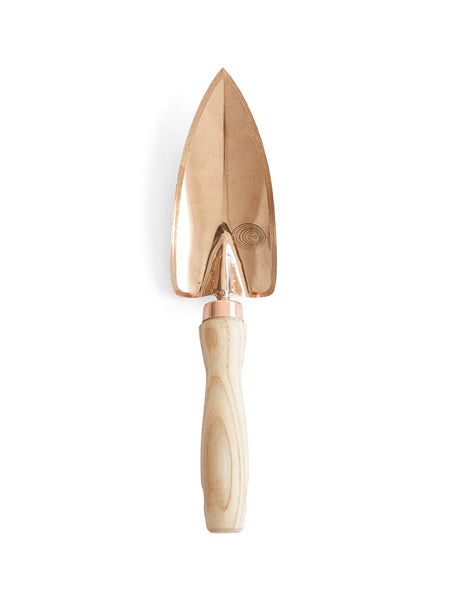By early autumn, many summer-flowering annuals have burned themselves out. They’ve given their all, and their instinct is now to produce seed and die before the weather gets cold. With 6-8 weeks or more until the first frost, now’s the time to plant a glowing autumn display that will light up your garden through Halloween and Bonfire Night into November.
The season lends itself to fiery colours such as red, orange, yellow, gold, plum and purple. They’re enriched by the steadily lowering sun, making colours appear rich and velvety. As luck would have it, many autumn-flowering plants, such as dahlias, rudbeckias, heleniums, Michaelmas daisies, salvias, chrysanthemums and crocosmias, produce blooms at the ‘hot’ end of the colour spectrum. Grasses are beautiful too, especially as they start to dry and develop warm, biscuity hues.
For my blazing autumn planter, I chose several perennial plants. The advantage of perennials is that you can plant them in the garden once their flowers start to fade, but before the ground becomes frozen. They overwinter and grow again in spring when the weather warms. Chilli peppers won’t survive a winter in the UK, so I’ll be cropping the fruits and composting the rest. Cheerful Bidens ferulifolia ‘Beedance Painted Red’ may return for another year or two if it’s happy but is generally grown as an annual plant in the UK. Aeonium arboreum ‘Zwartkop’ is a succulent plant and will need winter protection in all but the mildest parts of the UK. Mine will go into an unheated greenhouse before the first frosts.
Here's What I Used:
- 1 x terracotta pot measuring 14 inches (36cm)
- Peat-free potting compost
- Potting grit (horticultural grit)
- Moss or crocks
- 1 x Crocosmia (montbretia) – yellow or orange as you prefer
- 1 x Aeonium arboreum ‘Zwartkop’
- 1 x Bidens ferulifolia (Apache beggarticks)
- 1 x Capsicum annuum (chilli pepper) ‘Orange Wonder’
- 1 x Heuchera ‘Black Beauty’
- 2 x Uncinia rubra (red hook sedge)

Here's How I Did It:
- The first step is to take a clean terracotta pot (you can use a resin, plastic or concrete planter if you prefer) with at least one drainage hole in the bottom. Cover the drainage hole with a piece of moss or crocks to prevent the compost from falling through the hole. Crocks aren’t essential; the main thing is that excess water can drain freely from the base of the pot.
- Fill the pot around two-thirds of the way up with peat-free compost. I used a formula including biochar, coir (from coconut husks), seaweed, worm casts and mycorrhizal fungi. I added potting grit to aid drainage. Biochar helps retain moisture and improve the structure of the compost, mycorrhizal fungi encourage strong root development, and the worm casts and seaweed provide nourishment. Coir is a more sustainable and longer-lasting alternative to peat.
- Now you are ready to plant. By autumn, plants are unlikely to grow much more, so you can pack them in tightly without any risk of them becoming overcrowded later on. What you want is an instant display. That said, if you’re at the garden centre or nursery and you have a choice between a plant that’s still in bud or one that’s already in full bloom, select the one that’s in bud. That way you’ll enjoy a longer-lasting display, as plants already flowering their socks off are likely to run out of steam sooner.
- Gently ease each plant from its pot. If the compost appears packed with roots, you may want to tease the rootball out to help the plant get established in its new container.
- Begin with the tallest or biggest plant, placing it towards the back or in the centre if you plan to view the container from all sides. Then start adding other plants, making sure that the level where the plants emerge from the compost is consistent – you don’t want any getting buried or standing proud when you’re finished. If a plant sits too low, add a little compost beneath it. If it’s too high, make a depression that it can sit in. With the crocosmia positioned towards the back of the pot, I added a ‘feature’ plant, something to draw my eye to the centre of the display. Aeoniums are showstoppers and give the container a slightly decadent, exotic feeling. Chillies and bidens have similar coloured fruits and flowers, but very different forms, which I like. A heuchera echoes the dark, smoky tones of the aeonium and red hook sedge helps to fill any gaps around the front of the pot. Something trailing, like a sedum, would also work nicely in the foreground.
- Once all the plants are in position, it pays to stand back and make adjustments until you are happy with the arrangement. Then fill all the gaps between the plants with compost, trying to end up with a level surface about 5cm below the rim of the pot.
- Water generously to settle the compost around the roots and then top off with potting grit. Potting grit gives a professional finish. More importantly, it helps retain moisture, prevents the compost from splashing onto the plants when it rains, and deters pests such as slugs, snails and vine weevils.
- Now stand your finished pot in its final position, taking care to lift it correctly: freshly-watered pots can be weighty. Although some of the plants I used will tolerate shade, autumn days are shorter and light levels lower, so try to find a bright, sunny spot if you can.
- How often you need to water will depend on the weather, but I’d suggest a thorough watering at least twice a week. You should not need to feed as there ought to be sufficient nutrients in the compost to keep your plants healthy until it’s time to dismantle the display at the end of autumn.
- Pick chillies as required, taking care to wash your hands afterwards. Remove fading flowers from the bidens and crocosmia to encourage more blooms over the coming weeks.
There you have it, a cheerful, fiery display which will reward you with some welcome autumn colour. Of course, there are infinite plant combinations that would be every bit as glorious, so feel inspired to visit your local garden centre or nursery, see what they have in stock, and have fun creating your own container.



